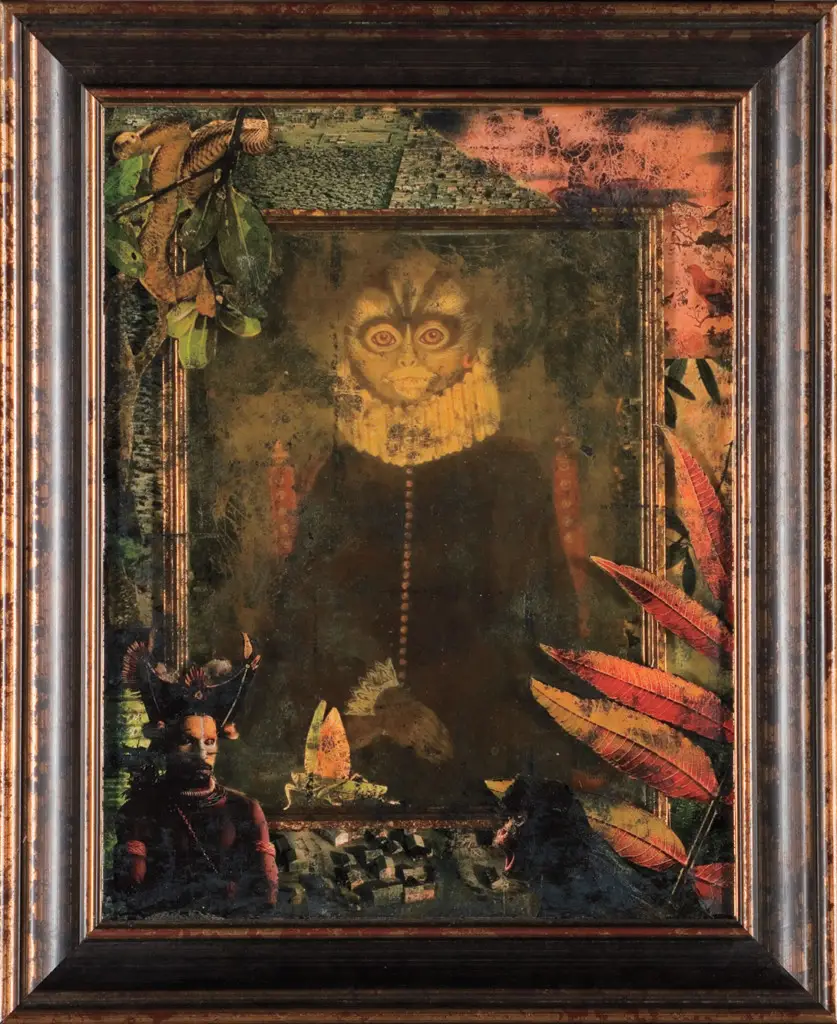At Eglomisé-Atelier, the work of two Marin painters literally shines.
FAIRFAX RESIDENT Jane Richardson-Mack rose to the heights of her profession by breaking a sheet of glass. “It was an accident,” the former actress and chanteuse, now an accomplished verre églomisé artist, says with a laugh.
She gravitated toward her craft soon after the death of her first husband in 2003 when her friend Victoria Weiss, a faux painter and muralist, persuaded her to try painting. About seven years ago, the pair followed English artist Frances Federer, who has written an authoritative book about églomisé, to her workshop in London to learn from her there. They learned that églomisé was revived by 18th-century French frame-maker Jean-Baptiste Glomy, whose name is now indelibly linked to reverse painting. Also, Richardson-Mack discovered that she loved it.
“I can’t handle computers but when you ask me to start a painting with a highlight, and to fill in the background last, I am a natural,” she says, gleefully. “Drawing in reverse on glass is disorienting, but I like to draw backwards, and I don’t make a mistake.”
Today the two friends jointly produce verre églomisé works under the rubric of Marin studio Églomisé-Atelier. But when they returned to the Bay Area from London, they each set up separate studios (which they retain today).
“For a time, I worked only with small 4-by-5- inch pieces of glass,” Richardson-Mack recalls. Then one day, right after she tried for something larger — two 3-foot-tall panels depicting peacocks — one of the panels broke in half. Distraught, she looked around for a way to mend it, but her etched and burnished goldleaf finish would have highlighted any glued imperfections at the break.
She might never have worked at that scale again had it not been for the simplest of solutions: “I thought of sandwiching the broken piece between two new sheets of glass to hold it firmly in place,” she says.
Cavorting monkeys like those in French Baroque singerie and other fantastical creatures also inhabit Richardson-Mack’s works, which grace home fireplaces and restaurant interiors as well as elevator walls of several mansions featured in the San Francisco Decorator Showcase. Her always idiosyncratic and fascinating site-specific paintings are hard to move after they are installed, and the artist is relieved when Showcase homeowners inevitably can’t part with them, despite price tags that can range from a thousand to several thousands of dollars.
Richardson-Mack, who has also designed store windows and stage sets, recalls one of the first art pieces she created a decade ago at the Sir Francis Drake Hotel in San Francisco that involved an elevator. Installed in a 6-by-12-foot cubicle hidden halfway between the mezzanine and the first floor, the piece evoked a Prohibition- era speakeasy in the building that was known only to hotel guests and accessible via a special elevator. “My life-size installation was a 1920s-style vignette with mannequins, not églomisé,” she clarifies.
Meanwhile, Weiss, still a faux painter and also a textile artist, typically makes abstract mirror- like églomisé back panels for small objects, such as the lighting sconces at Croworks Luminosity, her San Anselmo studio. Yet the larger commissions she creates with Richardson-Mack for Eglomisé-Atelier give her a welcome opportunity to be experimental. For example, the unique “Golden Landscapes” panels the duo created for an elevator inside a 2017 San Francisco Decorator Showcase house — works composed of Weiss’s painted silk panels embedded within Richardson-Mack’s “sandwiches” — signal a beautiful new direction for both artists.
“We developed the idea, after several false starts, of making the negative space around trees and other elements solid gold leaf,” Weiss says of the landscapes they painted on silks in the style of California landscape artists Lucia and Arthur Mathews. She had begun to incorporate a similar technique in her own highly burnished églomisé sconces, but in the large Showcase panels, the effect is subtler. The painted silk behind glass, with unburnished gold leaf for the sky and water in the landscape, is less reflective than in the sconces and glows like a sunset.
“We wanted to do something completely unexpected,” Richardson-Mack says. “I thought of the images and the concept of collaging painted canvas behind silver leaf, but Victoria suggested hand-painted silk and gold. We altered our burnishing style and the collaboration was pure alchemy.”
plays with stripes and basic shapes achieved with paint and copper leaf behind glass.

